Date: 26th August 1940
Time: 16.30 hours.
Unit: 4 Staffel./Kampfgeschwader 55
Type: Heinkel He 111P
Werke/Nr.2124
Coded: G1 + DM
Location: On beach, Bracklesham, East Wittering, Sussex. England.
Pilot: Leutnant. Albert Metzger 67019/103 POW - (slightly wounded).
Observer: Unteroffizier. Rolf Schandner 67019/22 – Killed.
Radio/Op: Unteroffizier. Rudi Paas 67019/30 – Killed.
Flt/Engineer: Feldwebel. Julius Urhahn 67019/37 – Killed.
Gunner: Flieger. Rudolf Fessel 67019/102 – Killed.
REASON FOR LOSS:
This aircraft was shot down by Sgt B. E. P. Whall in a Spitfire from No.602 Squadron during attack on Portsmouth Harbour. Lt. Metzger force landed on the beach at Bracklesham, East Wittering. The pilot escaped with his life while attempting to land, 500 bullet strikes were found to have hit the aircraft, many coming from the ground troops who successfully stopped the surviving crew members from setting light to their aircraft.
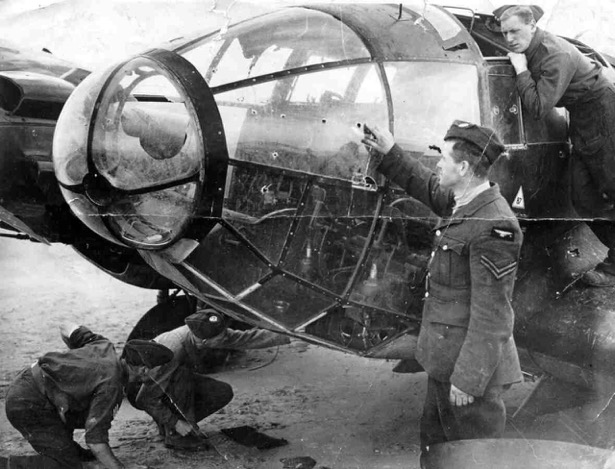
R.A.F. personnel examine the bullet strikes in the cockpit area of Metzger’s Heinkel (via Hall)
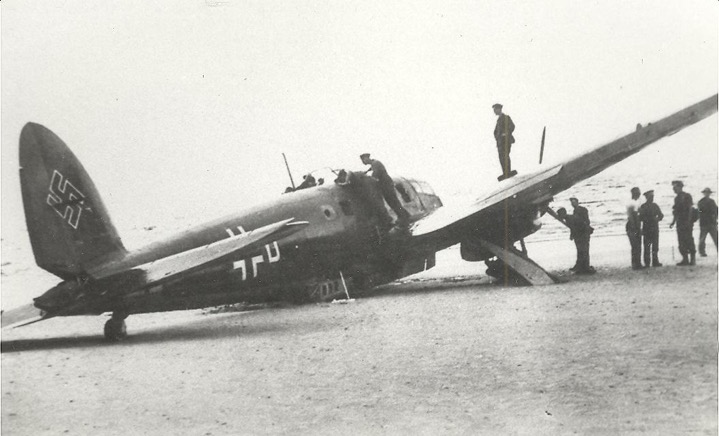
Lt. Metzger's He 111 waits for the tide to turn, eventually the aircraft is wrecked by the sea (via Hall).
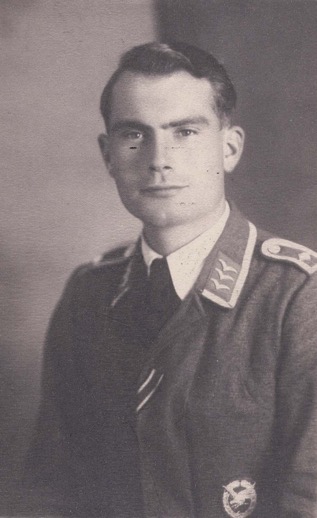 cc
cc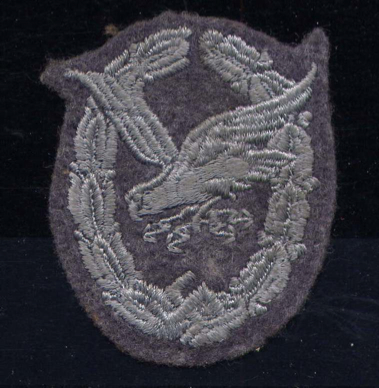
Flt/Engineer: Feldwebel. Julius Urhahn 67019/37 by Simon Muggleton;
Born on the 30th September 1914, Julius Urhahn was the son of Nicholas and Anna (nee Brill) who lived in Marpingen, Saarland (25km N of Saarbrucken). His father was a publican, having retired from mining, and was brought up into a Catholic family who were of true German stock. After leaving school he trained as an engine fitter, a profession that would stay with him all his life.
As was the custom at that time, he had to serve with the Reichsarbeitsdienst (RAD - Labour Corps) for six months before taking on full time work. He was billeted at labour camps at Altrip and Schifferstadt (12km from Ludwigshafen), where he became proficient in house building and general repairs, along with drill, marching and sports, being awarded the bronze DRL Sports Badge. By the outbreak of WW2 there were over 360,000 members of the RAD, who after all this training would have been well prepared for later military service.
Julius Urhahn enlisted with the German Army on the 1st October 1934, volunteering to serve with the Pioneer Corps, initially joining the 1st Platoon of the 1st Battalion as a Pionier. Urhahn was then posted to the 4th (Motorised) Engineer Regiment at Holzminden where he stayed until 31st October 1935, with further postings to No 9 Battalion, until the 1st November.
From here he was sent to join the 7th (Motorised) Engineer Regiment at Hannoversch Munden. On the 1st December 1935, he was attached to No 35 Company (Pioneers) staying in barracks at Pzorzheim, Baden Wurttenburg (between Stuttgart and Karlsrune). These units were located in the Black Forest area where training in demolition and bridge building were undertaken.
Two months later he was promoted to Oberpionier, serving under Obefeldwebel. Pappenscheller, Lt. Kuhn, Hptm. Geiger and Major. Wagner. During this time he was engaged on bridge building on the River Enz at Niefern (just east of Pforzheim) and along the Rhine. The Pioneers were the fore-runners of the ‘storm-troopers’ who operated in small units that could move quickly and were issued with small arms, grenades and flame throwers, as well as being proficient in engineering. Julius Urhahn qualified as an armourer (Waffenmeister) and was proficient in using the MG15 machine gun as well as the K98 Rifle and Luger P08 pistol.
By the autumn of 1936 Urhahn must have become fed up with bridge building and general army life as he volunteered to join the Luftwaffe.
On the 2nd October 1936, he was sent to No 14 Flying Training School at Detmold, where he became proficient in the trade of a Flight Engineer, attaining the rank of Leading Aircraftsman (Obergefreiter) on the 1st December 1936. He completed this training, passing out with his official Air Gunner/Flight Engineer Badge (Fliegerschutzenabzeichen) on the 1st March 1937.
On the 2nd March 1937, Urhahn was posted to Bomber Squadron KG 27 (Kampfgeschwader 27- ‘Boelke’) based at Wunstorf flying in Ju 86’s, (part of Fliegerkorps IV - Luftflotte 3).
His stay there only lasted for two weeks, before being posted to KG 254 at Eschwege on the 15th March, again flying in Ju 86’s, this posting lasted until the 31st March 1938.
On the 1st April 1938 a new squadron, KG 55 Griffon Squadron (Griefen - Geschwader) based at Gilken, was formed and Urhahn became one of its first Flight Engineers.
Later in the same year he took part in the campaign of incorporating the Sudetenland into the Reich (German occupied Czechoslovakia) and was subsequently awarded the 1st October 1938 medal. He was also awarded the four year service medal (Dienstauszeichnung IV Klasse), and was promoted to Corporal (Hauptgefreiter ) on the 1st November 1938.
Urhahn took part in the air war against Poland with KG 55 from the 2nd September until the 21st September 1939, codenamed Fall Weiss (Case White). This was the first occasion that the unit saw action flying the new Heinkel 111P from Giessen, with the loss of only one aircraft and crew (3 others being damaged). He was on home defence in Germany between 22nd September 1939 and the 9th May 1940, and marrying during this time.
The ‘phoney war’ with France and the Low Countries ended on the 10th May 1940 with operation Fall Gelb (Case Yellow) being implemented, with the infamous Blitzkreig sweeping through these countries.
KG 55 was again in action, this time in the Lorraine region of France with missions over Toul and Nancy. A total of 11 aircraft were lost with another 7 being damaged, Urhahn was wounded during this campaign spending time in hospital where he was awarded the Iron Cross Second Class (Eisernen Kreuzes II Klasse). He would be promoted to Sergeant (Feldwebel) on the 1st July 1940 which earned him the distinction of being able to wear the Fliegerdolch (Flyers Dagger) whilst in Service Dress uniform.
The airmen of KG 55 were in confident mood at the commencement of the Battle of Britain in July 1940 (Luftschlacht um England), losing only seven aircraft in the first month. This would increase as the battle evolved, with the loss of some of its most experienced crews. Urhahn would fly a total of 19 missions and claim four ‘kills’ in his other capacity as an Air Gunner, whenever the occasion arose.
He took part in the famous attack by three He 111’s from KG 55 on Middle Wallop airfield on the 14th August as a follow up to Adler Tag, bombing the hangers and offices of No. 609 Squadron. One of the Heinkel’s piloted by Oberst. Stoeckl (Geschwaderkommodore of KG 55) was shot down by P/O David Crook and F/O John Dundas of 609 Squadron over the airfield.
Monday 26th August 1940 was a generally cloudy day over Britain with the South having bright periods. On this day the Luftwaffe would deliver three main attacks on airfields at Biggin Hill, Kenley, Hornchurch, North Weald and Debden as well as Portsmouth and Warmwell airfield during the afternoon. Leutnant Albert Metzger was the pilot of Heinkel GI+DM of 4/KG55, one of 150 aircraft from Luftflotte 3 detailed to attack Portsmouth docks at around 4pm that day. His crew consisted of Unteroffizer Rudolf Schandner (Observer), Feldwebel Julius Urhahn (Flight Mechanic), Flieger Rudolf Fessel (Air Gunner) and Unteroffizer Rudi Paas (Wireless Operator).
Having crossed the Channel unopposed, the Heinkel’s from KG 55 were lining up for their bombing run when they were intercepted just short of the target by eight RAF fighter squadrons from 10 and 11 Group. This forced them to scatter, jettisoning their bomb loads into the Channel in order to make a fast get away. One of the RAF Squadrons attacking this force were the Spitfires from Green Section of No 602 Squadron based at West Hampnett. Sergeant Basil Whall was flying in formation at Green 3, and trying to get himself into a position for attack, whilst avoiding the German escorting 109’s from the 1 Staffel Jagdgeschwader 53. Eventually, after a few tight turns, he managed to get his sights onto the port engine of one of the Heinkels and pressed his gun button. He could see the exploding De Wilde ammunition ripping across the wing and engine. His combat report giving more details:-
After attacking two Me 109’s without any visible damage, I dived down onto bombers, selecting one He 111 on a SE course. Adopted full beam, attacked slightly in front from 1000 feet with 2 second burst, and saw port engine stop and E/A drop out of formation. Followed this E/A down doing four more attacks with short bursts, all on the beam and saw second engine stop and port engine in flames. This E/A landed on the beach at West Wittering. Circled it and saw Army taking crew prisoners, then climbed to attack single He 111 flying south below cloud at 1000ft. Caught this E/A 10 miles out to sea and adopted quarter attack starboard side from above. Starboard engine belching clouds of white smoke. Attacked again quarter on port side and E/A caught on fire and crashed in sea.
I then returned to land at West Hampnett, pausing to circle around pilot of friendly fighter in water.
Claim 2 He 111’s destroyed over Selsey Bill at 15000ft 1625hrs.
Leutnant Metzger meanwhile struggled with the controls of the crippled Heinkel, having part of the undercarriage hanging down, and not hearing any reply from any of his crew, decided to try and land the aircraft on a stretch of sand at West Wittering below him. Unluckily for him, situated on this same stretch of beach, was a company of soldiers from the 2nd Battalion Duke of Cornwall’s Light Infantry, who were engaged in target practice, who soon turned their attention onto the crippled aircraft and opened fire. The Heinkel came to rest on the sand, facing out to sea, with its undercarriage completely collapsed, the pilot wounded with two bullets in his thigh, and the rest of his crew dead. Some of the soldiers lifted the wounded pilot from his seat and laid him on the sand and dressed his wounds, whilst others carried the dead crew from their positions within the aircraft.
They were later buried with full military honours in Chichester Cemetery.
The local and national papers had a field day with this great propaganda story of soldiers helping to shoot down a Heinkel, and killing most of its crew. Even the War Diary of the Duke of Cornwall Light Infantry claimed that A Company had brought down a ‘ bomber’ at 1627hrs on 26.8.40.
This would evolve into local folklore, that in later years was hinted to be a ‘ war crime’ committed by the Army on the unarmed Luftwaffe crew on English soil. It would be only in 1979 that diligent research by Peter Cornwall and Andy Saunders, would unravel the mystery, which Peter later published in After the Battle Magazine No 23 of that year. Peter and Andy had located the pilot, who was living in Bonn, and obtained a testimony from him stating that the crew were already dead (from the attack by Sergeant Whall) by the time he landed on the beach.
He recounted that after the first attack, the port engine stopped, and he cut the fuel supply and tried to keep the aircraft in formation. He could not hear any noise from the aircraft’s rear MG15 guns, nor get a response from either the Flight Engineer or Wireless Operator. He sent the Observer, Rudolf Schandner aft to find out why when they were attacked again, the aircraft being peppered along its starboard side with gunfire from an attacking Spitfire, killing the Observer. This resulted in the oil supply to the remaining engine being cut, leaving him no alternative but to crash land on the beach and being captured. In 1941, Metzger was shipped across the Atlantic to a Prisoner of War camp near Lake Superior in Canada, where he stayed until the end of the war,
The Staffel Kapitan of KG 55, Oberleutnant Otto Harms, wrote a condolence letter from Paris to Julius Urhahn’s wife on the 30th August 1940:-
Dear Mrs. Urhahn,
As your husband’s Squadron Leader, I have the heavy and sad duty to inform you that your husband did not return from the mission of 26.8.40. The aircraft in which he served as Flight Mechanic was attacked by a British fighter which shot out the retractable landing gear. This is the reason that the aircraft lost speed very quick and its contact with the squadron.
We assume, definitely that the pilot Lt Metzger had tried an emergency landing on British terrain.
It may be possible Mrs. Urhahn that you will receive information about your husband before we do. We would appreciate it very much if you could inform us if that is the case.
Your husband’s personal property will be sent to you in the next few days.
Hoping that you, dear Mrs. Urhahn, are surrounded with good people, who will help you to bear the heavy body blow. I want to greet you and assure you that we all feel for you, and we hope that your husband, our brave Flight Mechanic is still doing well and that we will hear from him soon.
Yours faithfully,
Otto B Harms.
This was followed by a further letter, again sent from Paris by Otto Harms dated 25.10.1940.
Dear Mrs. Urhahn,
Permanent night flights now allow me, and your husband’s squadron, to offer well meant condolences. Your husband had been one of my most loyal and courageous archetypical soldiers in battle and in the preparation for it. He bore the Officers Sword Knot lawfully and with pride – he died a hero’s death in the gigantic battle for Germany’s existence and liberty.
For him there would have not existed a more beautiful death than to die as a hero for the Fatherland.
For you, dear Mrs. Urhahn, it is a grave sacrifice. We all know it. But nevertheless, I hope that the blood price you have had to pay, and which will contribute to Germany’s happy future, will fill you with pride and help you to bear the heavy sacrifice bravely.
Yours faithfully, O. B. Harms.
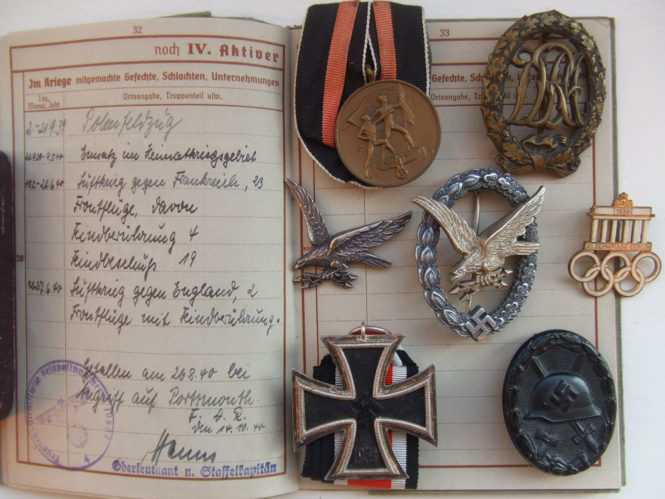
Page from the Wehrpass of Julius Urhahn including his decorations (Muggleton)
In 1962 the bodies of the German crew were exhumed and reburied at the German Cemetery at Cannock Chase, Staffordshire.
With grateful thanks to:- Peter Cornwall, Andy Saunders for their help and research. After the Battle Publications. Gordon Leith - RAF Museum Hendon.
Burial details: Those who lost their lives now lie in the Deutsche Soldatenfriedhof Cannock Chase (Brownless)
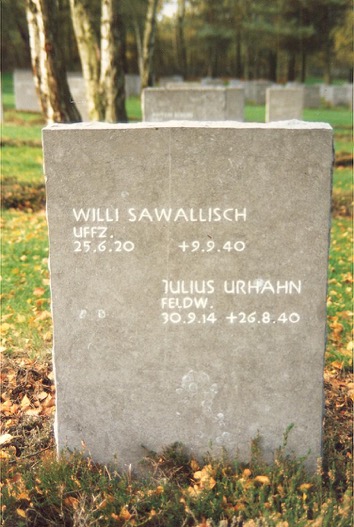 cc
cc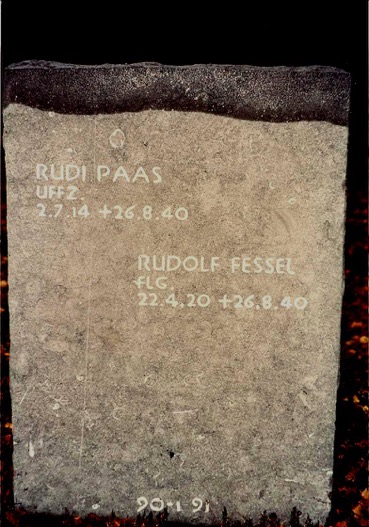
Researched and compiled by Melvin Brownless with special thanks to Steve Hall for his help in constructing this page of remembrance, August 2013.
Page updated April 2014 after receiving new information from Simon Muggleton regarding crew member Julius Urhahn. Many thanks to Simon for supplying this most useful and interesting information. Credits also to Andy Saunders and Peter Cornwall, not forgetting Gordon Leith for their additional knowledge.
